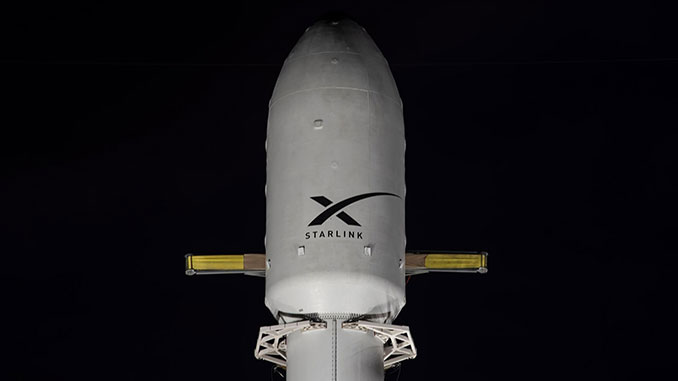
Update 8:10 p.m. EDT: SpaceX confirms deployment of the Türksat 6A satellite.
Turkey launched its first home-grown communications satellite aboard a SpaceX Falcon 9 rocket Monday evening. Prior to the mission’s launch, Turkey’s Minister of Transport and Infrastructure Abdulkadir Uraloğlu called the Türksat 6A geostationary satellite “the symbol of our independence”.
While this wasn’t the first Türksat spacecraft launched, it’s garnered such national pride because it is the first of its kind to be entirely built in Turkey. Uraloğlu said Turkey is just the 11th country capable of manufacturing its own communications satellites.
Liftoff of the mission from pad 40 at Cape Canaveral Space Force Station happened at 7:30 p.m. EDT (2330 UTC), following multiple pivots in the launch window due to poor weather.
Following the launch, Turkish President Recep Tayyip Erdoğan expressed his gratitude to SpaceX and its founder Elon Musk in a statement on X (formerly Twitter), in which he said that his country is “pleased to strengthen our cooperation with Mr. Elon Musk and SpaceX in various fields.” Earlier this year, SpaceX also provided a ride to the International Space Station for Turkish astronaut Alper Gezeravcı, who served as the mission specialist during the private astronaut mission, dubbed Axiom Mission 3 (Ax-3).
SpaceX also launched other satellites for Türksat, including the Türksat 5B satellite, which launched on Dec. 18, 2021.
“Together, we witnessed another source of pride for our country and nation,” Erdoğan wrote on X. “As Turkey, we produced more than 81 percent of the subsystems, satellite ground stations and software in the 6A project, which is of great importance for our country’s future in space, with national resources.”
“In addition, with the entry into service of Türksat 6A, Türkiye will become a country capable of producing communication satellites. Thanks to technology and experience gained, our country will have a market share in the design and production of satellites and their components,” he added. “Producing critical technologies such as communication satellites without being dependent on foreign sources is also of great importance for our national security.”
SpaceX was grappling with less than ideal launch conditions leading up to liftoff. On Sunday, the 45th Weather Squadron forecast only a 30 percent chance of favorable weather at liftoff for both the primary and backup dates.
Meteorologists were tracking a weak ridge that brought afternoon thunderstorms into the area to start the week, which were capable of producing winds of 40 miles per hour or greater.
“Convective activity should taper off after sunset, but steering winds are expected to be weak, possibly extending any weather violations that occur. Conditions are expected to be similar for the backup day,” the weather report stated. “The Cumulus Cloud, both Anvil Cloud, and Surface Electric Fields are the most likely rules to violate on both the primary and backup days.”

The Falcon 9 first stage booster supporting this mission, B1076 in the SpaceX fleet, launched for a 15th time. It previously launched SpaceX’s 26th Commercial Resupply Services (CRS-26) mission to the International Space Station, the 16th batch of OneWeb satellites and eight Starlink flights among others.
A little more than 8.5 minutes after liftoff, B1076 landed on the SpaceX droneship ‘Just Read the Instructions.’ This was the 86th landing on JRTI and the 328th booster landing to date.

Expanding communications capabilities
About 70 minutes after liftoff, the Türksat 6A satellite reached its temporary orbit. It’s operational orbital position will be at the 42 East longitude position in a geocentric orbit about 35,786 km above the Earth’s surface.
“Our local and national communication satellite, which will have a power of 7.5 kilowatts, will have 20 transponders,” said Uraloğlu in a September 2023 press release. “Our TÜRKSAT 6A satellite will serve in Ku Band and will also provide service in new geography such as South-East Asia, which could not be covered by previous Türksat satellites.”
The 4,250 kg (9,400 lb.) satellite is designed to have a 15-year lifespan and will increase the reach of Turkey’s satellites “from 3.5 billion to 5 billion” people. It was manufactured by Turkish Aerospace at the Space Systems Assembly, Integration and Test (AIT) Center with financial backing by both the Undersecretariat for Defence Industries (SSB) and Türksat .

The satellite is powered primarily by a pair of solar panel wings, which are 10 m (32.8 ft.) long and have a total area of about 37.7-square-meters (405.8-square-feet).
Once on orbit, the satellite will be managed by TÜBITAK (Türkiye Bilimsel ve Teknolojik Araştırma Kurumu), which translates to the Scientific and Technological Research Institution of Turkey. The agency is an advisor to Turkey’s Supreme Council for Science and Technology.
TÜBITAK said it put the satellite through a barrage of tests to verify its readiness for launch, including thermal vacuum testing, mechanic stress tests and separation demonstrations. The agency said the panels produce about 9.2 kW of power
“In this project, we tested a total of 84 pieces of domestic equipment of 24 different types, such as flight computer, power regulation and distribution units, interface control equipment, stargazers, sun sensor, reaction wheel, electric propulsion subsystem and communication equipment,” the agency said in a social media post, translated by Google. “Türksat 6A is ready for its mission in space!”
The satellite uses xenon gas-powered Hall-Effect Propulsion Motors (HALE) for in-orbit maneuvers. This is an electric propulsion system, which was developed by the TÜBİTAK UZAY (Uzay Teknolojileri Araştırma Enstitüsü, which translates to Space Technologies Research Institute).
“With the technologies we produce, we not only create satellites, we are now in a position to export our satellite subsystems, and we are on our way to becoming a world-class technology provider!” TÜBITAK wrote on social media, as translated by Google.




